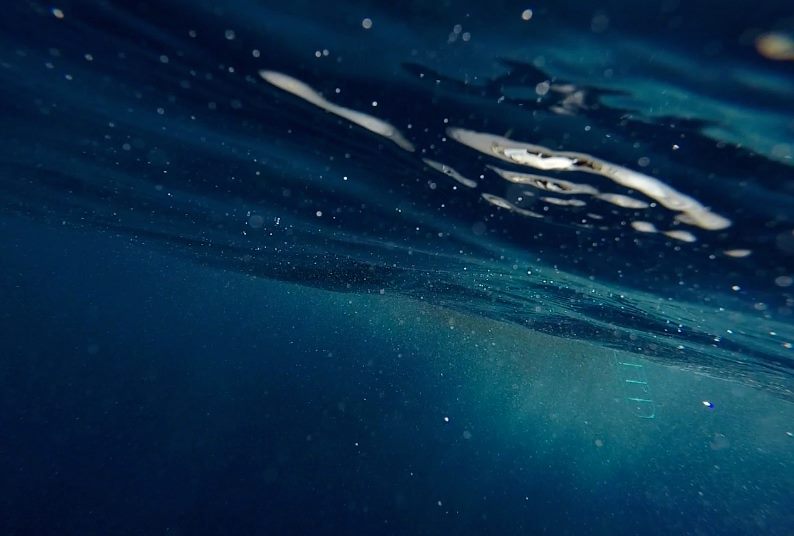This piece was originally published in the 2017 edition of Eno Magazine, the Nicholas School’s literary art magazine.
“Sepan sus límites,” the deckhand said once more, warning us, a group of 10 undergraduate students, to know our limits. We were all freshly certified scuba divers, most of us young and fearless – and when something goes wrong below the surface of the sea, situations quickly divide themselves into luck and death.
We had just landed in the tropical paradise of Cozumel, Mexico, the location of our weeklong coral reef biology course. We found ourselves, a mere hour after arrival, dressed in damp neoprene, heavy oxygen tanks pulling on our shoulders and humid air clinging to our faces. Perched precariously on the side of a small boat, we peered through our masks into the water below, unsure and excited by what was to come. As the deckhand called us each by name, stumbling apologetically over pronunciations with his thick accent, we stepped into the sea.
Bobbing for a moment on the choppy surface, I pressed my thumb firmly against the air release valve of my buoyancy vest, slowly kicking my fins to control my descent. Slipping away from the comfortable world above, we drifted downwards towards Cozumel’s Palancar Reef, far beyond any depth I had previously achieved.
Ten feet below the ocean’s surface is a stressful zone. The current from crashing waves tugs at your body, and the sunlight can be intense and disorienting. Sinking to 20, your ears squeal and pop and slight vertigo sometimes hits. At 30, motion slows and the sound of the boat’s motor disappears. By 40 feet, you no longer have to consciously equalize your body to the increasing pressure. At 60, you begin to focus on the fluidity of your breathing, and by 70 feet, your mind slips away entirely from the world above.
Dipping into deeper waters, 80 and 90 feet greet you with the stillness and distinct solace that make diving an addicting and potentially dangerous sport. The only sounds are your breaths escaping from your regulator, slow and patient as if to not disrupt the serene environment. When you stop kicking, you are motionless. As you slowly descend, you enter a world that in many places, is less explored than the face of the moon.
You spot an angelfish, a vibrant fire coral, small eels in a bed of sea grass—and you suddenly want to shout, to grin, to laugh—you long to somehow share the wonders you are experiencing with others. But you quickly realize that you cannot verbalize your excitement, nor document it for the future. You have no camera, no notebook, no phone to take pictures. You realize, awestruck and perplexed, that you face the unnatural task of recording memories with only your mind.
I spent the next six days swimming through vast coral archways, gazing mesmerized at the glow of bioluminescent plankton, and listening to the quiet crunching of parrotfish methodically removing algae from corals. I basked in the enormity and fragility of reef ecosystems, and as in many of life’s defining moments, I felt small.
Slowly, as you progress as a scuba diver, you’ll learn to embrace this solitude, crave the hour-long increments of time spent swimming alongside others, but existing with only your thoughts. You’ll begin to treasure the fragile and complex world around you, the power of your memory, and the ability to fully embrace a moment in time.
I returned home with 20 logged dives, a sunburnt face, and a slight improvement in my rusty Spanish. But beyond that, I returned with a breath of (compressed) fresh air that I often forget to take. In the age of shared experiences, in which photographs, videos and statuses document our every move, it is rare and beautiful to hold a memory that is purely your own. Solitude is a learned, and remarkable, thing.

Interested in submitting a creative piece to the 2018 edition of Eno Magazine? View submission instructions here.
